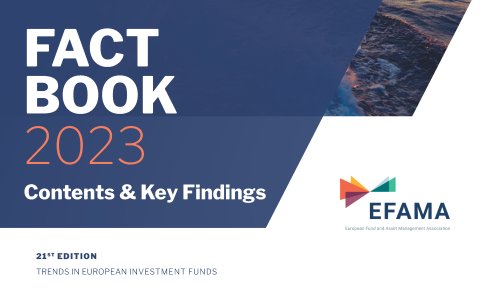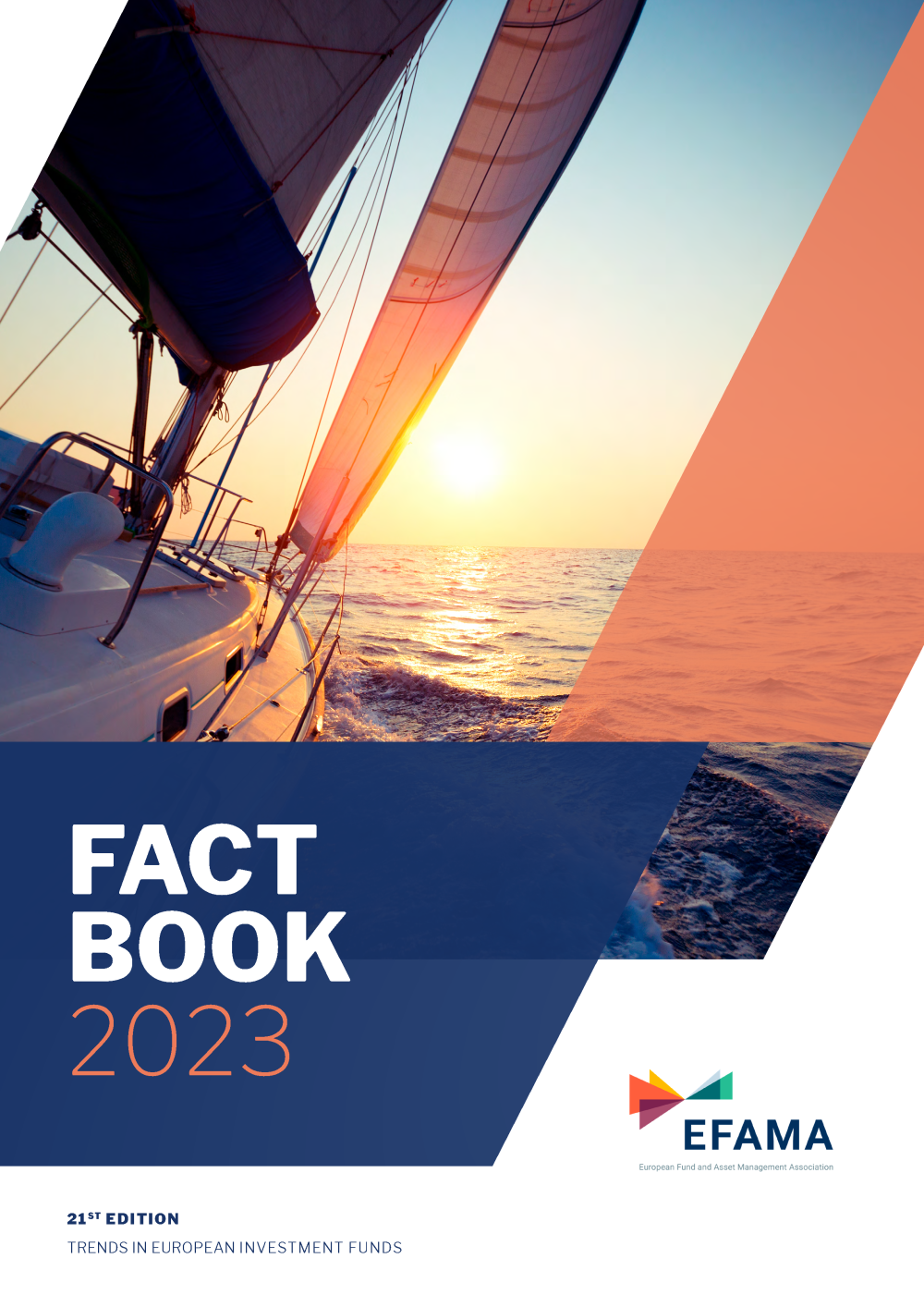EFAMA has today published its 2023 industry Fact Book, which provides an in-depth analysis of trends in the European fund industry, with an emphasis on what happened in 2022. It also includes an extensive overview of the regulatory developments across 28 European countries as well as a series of info-boxes addressing important regulatory issues EFAMA is actively working on.
Key highlights for 2022:
- Net assets of UCITS and AIFs declined by 12.5% – A sharp fall in global bond and stock markets was responsible for the vast majority of this decrease. Bond UCITS registered their worst results in 10 years as the sharp rise in interest rates negatively impacted the valuation of outstanding debt securities.
- UCITS recorded net outflows of EUR 167 billion – This amount represented 1.2% of total net UCITS assets. Net outflows were concentrated in equity and bond UCITS, reaching EUR 67 billion and EUR 127 billion, respectively.
- AIFs also suffered large net outflows (EUR 105 billion) – This outcome was mainly due to the decision of several pension funds in the Netherlands to manage their assets in segregated mandates rather than in AIFs.
- Demand for SFDR Article 9 funds was remarkably resilient – Net sales of Article 9 funds amounted to EUR 20 billion in 2022, with positive net inflows in each month of the year. These solid net inflows were even more striking given that many SFDR Article 9 funds were reclassified as Article 8 in the second half of the year.
- Net sales of UCITS ETFs also remained positive – UCITS ETFs attracted EUR 86 billion in net new money in 2022, a stark contrast to the overall net outflows from long-term UCITS (EUR 195 billion).
Additional key findings on the long-term industry trends and the demand for investment funds include:
- Large funds are becoming increasingly important in the UCITS market – UCITS funds smaller than EUR 100 million only accounted for around 4% of the total net assets of UCITS in 2022, with a market share that is gradually falling. At the same time, the share of the funds with more than EUR 1 billion in net assets is steadily increasing.
- The cost of UCITS continued to fall – During the 2018-2022 period, the average cost of equity UCITS decreased from 1.01% to 0.87%, whereas the cost of bond UCITS declined from 0.71% to 0.58%. This trend is expected to continue in the future, as increased transparency on fees and pressure from passive funds will remain in force.
- The European fund industry is becoming increasingly international – The share of cross-border funds domiciled in Europe (both held in another EU country and outside the EU) steadily grew since 2012. This trend confirms the vitality of the single market for UCITS and their success outside of the EU, in particular in Asia and South America.
- Institutional investors dominate – Insurers and pension funds are by far the largest fund investors in the EU. At the end of 2022, they held approximately EUR 4.2 trillion of UCITS and AIF net assets. Long-term investment funds held about EUR 3 trillion of funds at the end of 2022, whereas fund holdings by European households stood at EUR 3.2 trillion.
- EU retail investors were net buyers of funds in 2022 – Households in the EU acquired a net EUR 88 billion in investment funds in 2022, despite the drop in stock and bond prices. At the same time, the increase in bank deposits slowed considerably compared to previous years, mostly due to the sharp fall in the gross saving rate of EU households.
EFAMA’s Director General, Tanguy van de Werve commented:
“Despite a very challenging economic, financial and geopolitical environment, 2022 saw a resilient demand for sustainable funds, continued decline in average fund costs and maintained retail investors’ confidence. This is an encouraging message for the asset management industry.
Looking ahead, EFAMA will continue advocating for the best possible regulatory framework for UCITS and AIFs -including ELTIFs- as this will ultimately benefit investors and help them reach their financial goals.”
- ENDS -
Notes to Editors
Graphs and country-specific data are available for reproduction.
For further information, please contact:
Hayley McEwen
Head of communications and member development
About the Fact Book
The Fact Book is one of EFAMA’s flagship publications. A digital version of the Fact Book is freely available on the EFAMA website.
An Excel-based statistical package, containing more than 50 tables with historical time series on net assets, net sales and number of UCITS and AIFs at the country level, is available for purchase.




























